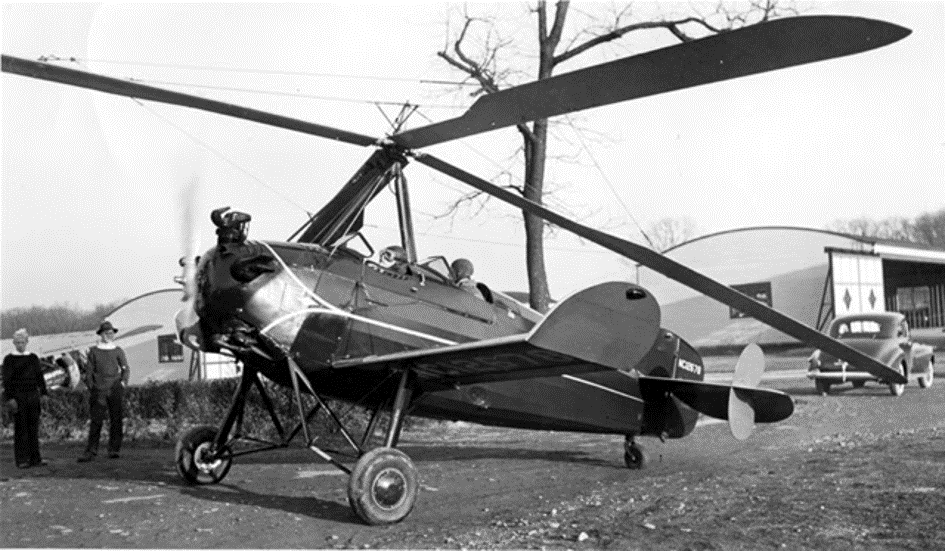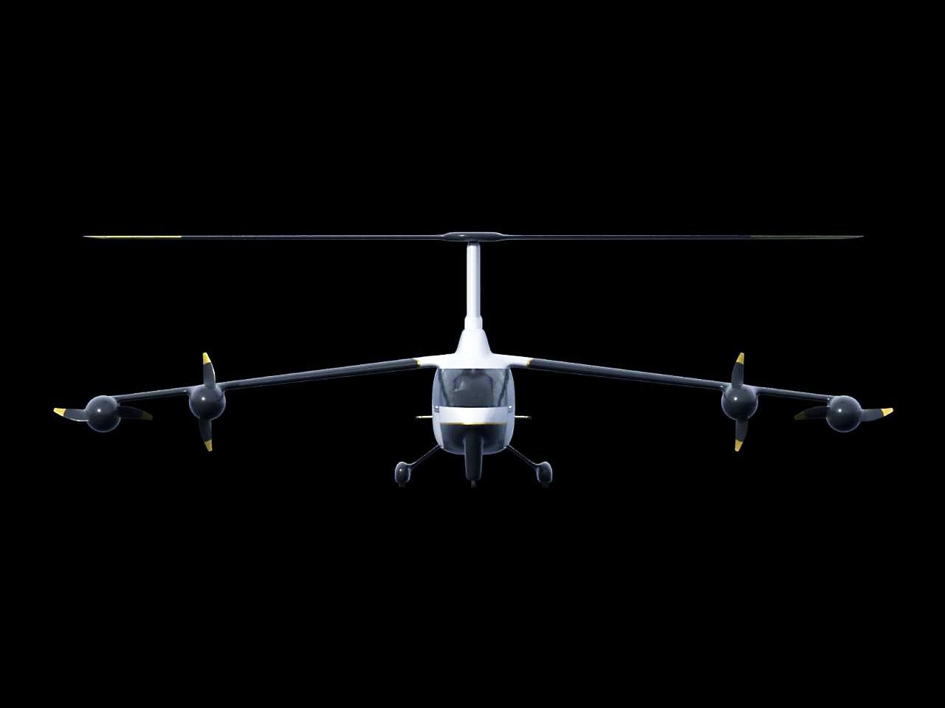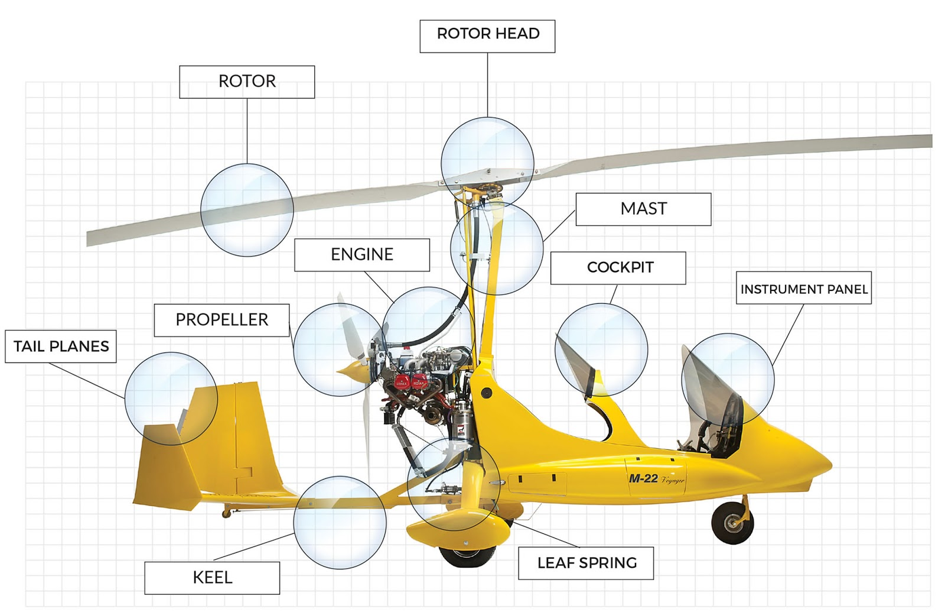Gyrocopter: A Hobby of a Lifetime Transformed
From novelty and hobby of a few, gyrocopters are progressing towards the mainstream sky. Gyrocopter, gyroplane, autogyro, gyro – call them what you like, are one of the safest aircrafts designed. Easy to fly, fun and adventurous, gyrocopters have been one of the favorite toy aircrafts for amateure pilots around the world since the 1930s’.
Gyrocopter, the last remaining secret of the aviation community, surged in popularity with the appearance in hollywood movies. Staring in James Bond’s You only Live Twice, the singles-seat, open cockpit aircraft, raised question and won the hearts of hobby aircraft society. From that point on, autorotating gyroplane aircraft, has become the object of home development and transformation, with crafty designs and many user improvements.

Picture 1: James Bond Little Nelly Gyrocopter – https://en.wikipedia.org/wiki/File:Little_Nellie.jpg
In the last century, gyrocopters have lived up to its renaissance. With the latest technology developments, it became much more affordable and accessible to many. In many countries today, gyroplanes are present everywhere – from transportation, adrenaline adventure sport, hobby and sightseeing.
From the First Take off To Flight around The World
The gyrocopter predates the helicopter, having been invented in the early 1920s by the Spaniard Juan de la Cierva. The idea behind the gyrocopter development was to produce aircraft that could be flown safely at low airspeed. De la Cierva’s aircraft was equipped with a conventional propeller for forward flight and an articulated, or hinged, air-powered rotor.
The first takeoff happened at the oldest Spanish airport in Madrid, Cuatro Vientos Airfield in 1923. Only two years later, in 1925., De la Cierva’s Gyrocopter has flown for 8 minutes crossing the distance of 10.5 km, a significant accomplishment for any rotorcraft of the time.

Electrical Gyrocopter Future
Due to the high commute in cities and the never ending human struggle with time save, urban aviation along with the tech giants, are on a quest to launch an electrical gyrocopter design back in the air.
At the moment two companies, Skyworks Global and Jaunt Air Mobility, are working on their model of electric air taxis called eGyro. This could make public transportation, along with the private transportation, much faster and pleasant.
According to WIRED ‘Among the many configurations being developed for future electric air taxis—everything from drone-like multirotor affairs to machines with both wings and tilting propellers—the gyroplane might prove to be the most readily adaptable to the task, given its simplicity and known safety characteristics.’

What is the Difference Between Gyrocopter and Helicopter?
There’s one basic fact that must be comprehended before any important talk of gyroplanes can occur: They are not helicopters. They operate very differently and use different mechanic. This confusion between the two kinds of rotorcraft has been increased by the low number of gyroplanes compared to helicopters. A gyroplane can do everything a helicopter can do except hover and take off vertically.
Gyrocopters are a blend of a helicopter and a fixed-wing aircraft. The significant contrast between a gyroplane and a helicopter is that the rotor of the gyroplane isn’t coupled to the engine. The rotor begins to turn as a result of flying in the air – the auto-rotatory principle – which produces the uplift required for flight. Because of the progressive standards behind its flight, the gyrocopter is likewise referred to pros as the “flying windmill.”
Both gyrocopters and helicopters are very charming and interesting rotorcraft. Moreover, they are capable of different and specific manoeuvres and uses compared to fixed-wing aircraft.
How Does a Gyrocopter Work?
Modern gyrocopters are very different from the first gyroplanes developed in the 1920s, but the principle of work has remained the same.
A gyroplane is a rotorcraft type that utilizes an unpowered rotor in autorotation to create lift. At the same time, an engine-powered propeller on gyrocopter, similar to that of a fixed-wing air ship, gives push to the plane. Because of a separate engine/propeller that provides forward thrust, gyrocopters are much safer than helicopters.
In the event of an engine failure, the gyrocopter will descend, while the main rotor blades will continue to rotate and provide lift due to the continued airflow through. Throughout flight, the gyroplane is therefore in a continuous state of autorotation and behaves similarly to a fixed wing aircraft, except that its wing rotates.

How to Fly ?
Now that we have established what gyrocopters are and how they work, it’s time to learn how to fly them. At least in theory, and then eventually in the sky.
Gyrocopters are easier to fly as they only have three flight controls: rudder pedals, a throttle and a control stick. For beginners, who have never flown before, this type of control over the aircraft is much simpler than a plane or helicopter. In addition to this, gyrocopters don’t require as much space to be able to take off or land as aeroplanes or helicopters do. Most gyrocopters nowadays only require around 4,5 m of runway to go up in the sky and around 6 m landing. That means they can be flown from practically everywhere. All you need is a garden big enough, and you’re away!
Pilot Training
Have you ever consider commuting to your office using your personal helicopter? What about a quick trip for a weekend getaway? With more and more gyroplane pilot training schools opening, this is about to become the future. Given the fact that the technology is making gyroplane technology more accessible in the near future we can expect to have the air flying trend and further development of private plane infrastructure, making the sky more available to everyone.
Gyroplane is an aircraft that falls under the classification of the light sport which does not require an extensive medical analysis as for the plane pilot. The medical exam is the same as for the driving licence. And while it is up to your skills on how much training and pilot exercise you need to fly a gyrocopter, you will have to approach the Private Pilot Exam before flying solo.
For an individual without any prior pilot training or experience, it usually takes up to 40 hours of gyrocopter training, both solo and with instructor, to approach the pilot exam. Most of the gyrocopter enthusiasts then either rent gyrocopters to start their flying adventure, or decide to purchase a gyrocopter.
Above all, there are plenty of quality simulators, console games, and computer games where a ground-locked plane pilot can get his sky-fix in. It’s practically an embarrassment of riches. Our favorite choices for autogyro simulation trainings are FSX and X-Plane.

What are Advantages?
For the aviation beginners, gyroplane’s simplicity makes it as easy for sky introduction. Moreover, gyrocopters are easy to maintain as a motorcycle. Also, you can fly them under sport-pilot rules with a “driver’s license” medical.
The most common single-seat gyroplane is about 4.25 m long and 2.4 m high, with wheels spanning 2 m. Empty weight is about 227 kg. Having these numbers in mind, it is clear that gyrocopters are easier for transportation.
- Small and versatile aircraft and small.
- It can fly at low speed, safely. At zero forward airspeed a gyro will slowly descend, to a survivable landing.
- Gyrocopter can land anywhere.
- It can takeoff from almost anywhere.
- Less complicated than helicopters, resulting in lower acquisition cost – much less complicated rotor hub.
- Lower running costs than helicopters.
Cost and Maintenance
Both the purchase and the operational/maintenance costs are low, infinitely inferior to those of helicopters and fixed-wing aircrafts.
The flight autonomy of the gyrocopter is similar to that of an airplane. Its fuel consumption is significantly lower than that of a helicopter. Given its high operational and takeoff flexibility it is easy to set up gyrocopter refueling points, increasing their range of flight. If necessary, it is possible to attach an additional fuel deposit to double the radio or flight distance.

MagniGyro, ELA Aviation and Trixy Aviation Products. Depending on your design preference, the open cabin or the closed one, speed and other aircraft preference, the price of the gyrocopter can vary. The starting price of the gyrocopter is 60.000 EUR and you can take a look at different gyrocopter models over here.
Safety
Most sport gyrocopters aren’t cute and beautiful. For years, they have been built and developed by the hobby gyrocopter crafters around the world. But, there is no denial, of the magnetic appeal and the fun the gyrocopter aircraft promises.
The question of gyrocopter safety has been complex in the aviation society, and it is closely connected to marginalized gyrocopter development in the past. Since the gyrocopter pilot schools are expanding, and the technology is being development by the big tech and aviation giants, this has changed in the last decade or so.
Due to the lack of training and design imperfection, the 1st generation of gyrocopter was considered to be dangerous. New aviation regulations, along with the improved gyrocopter designs for extended stabilization, has made it the world’s safest aircraft.
With a little bit of gyrocopter school and the formal pilot training offered by FAA certified flight instructors in your country, the gyrocopter safety is ensured and your sky adventure can begin.
Experience
Gyrocopters are becoming increasingly popular nowadays. Want to take your adventure to the skies, as a tourist or as a hobby pilot? Gyrocopter experience is cost-effective, accessible and beautiful in every way.
In summary, gyroplanes are easy and safe to fly if you get competent instruction and fly like you were instructed.
What We Do
